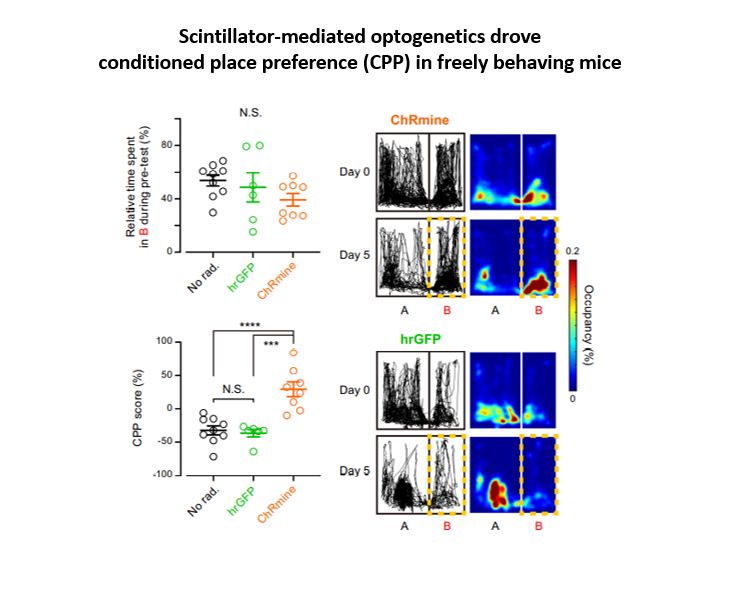- HOME
- News & Events
- Publications
- 【Publications】Remote control of neural function by x-ray-induced scintillation
Publications
【Publications】Remote control of neural function by x-ray-induced scintillation
July 28 2021
Lab: Hitoshi Takizawa
Paper information
Title:
Remote control of neural function by x-ray-induced scintillation
Takanori Matsubara, Takayuki Yanagida, Noriaki Kawaguchi, Takashi Nakano, Junichiro Yoshimoto, Maiko Sezaki, Hitoshi Takizawa, Satoshi P. Tsunoda, Shin-ichiro Horigane, Shuhei Ueda, Sayaka Takemoto-Kimura, Hideki Kandori, Akihiro Yamanaka and Takayuki Yamashita
Nature Communications. 12, 4478 (2021)
Online Ahead of Editing: July 22, 2021
doi:https://www.nature.com/articles/s41467-021-24717-1
Abstract
Scintillators emit visible luminescence when irradiated with X-rays. Given the unlimited tissue penetration of X-rays, the employment of scintillators could enable remote optogenetic control of neural functions at any depth of the brain. Here we show that a yellow-emitting inorganic scintillator, Ce-doped Gd3(Al,Ga)5O12 (Ce:GAGG), can effectively activate red-shifted excitatory and inhibitory opsins, ChRmine and GtACR1, respectively. Using injectable Ce:GAGG microparticles, we successfully activated and inhibited midbrain dopamine neurons in freely moving mice by X-ray irradiation, producing bidirectional modulation of place preference behavior. Ce:GAGG microparticles are non-cytotoxic and biocompatible, allowing for chronic implantation. Pulsed X-ray irradiation at a clinical dose level is sufficient to elicit behavioral changes without reducing the number of radiosensitive cells in the brain and bone marrow. Thus, scintillator-mediated optogenetics enables minimally invasive, wireless control of cellular functions at any tissue depth in living animals, expanding X-ray applications to functional studies of biology and medicine.

